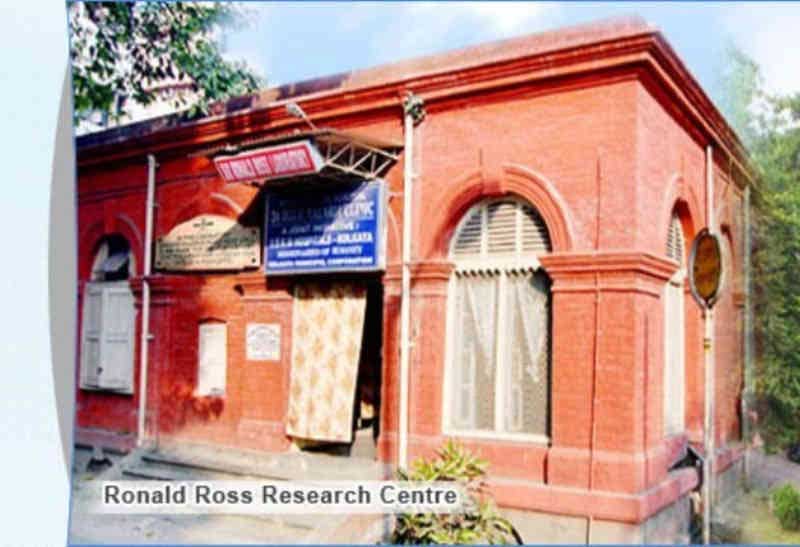
During the early days of the British settlement in Calcutta, the young English people, who arrived from the British Isles seeking their fortune, soon tend to become victims of deadly diseases like Malaria, Plague, Black Fever, and Amebiasis, as prevailed in Calcutta in those days. Apart from that, the damp and humid weather, marshy surroundings and unfiltered water made Calcutta a fetal death trap for them. The unbearable circumstances made them desperate to urge the British East India Company time and again to set up a hospital for the proper treatment of the sick and the afflicted.
As a result, in 1707 a hospital was setup in a single storey building on the premises of the Old Fort at Garstin place. But soon it turned out to be a hell and many described it as one way traffic, where many unfortunate people were admitted to get relief, but few came out of it to give an account of their experience. Added to the misery of the patients, a boundary wall was constructed around the hospital in 1710, to prevent the sick from deliberately leaving the hospital without the knowledge of the authority and reenter into the city premises. Apart from that, when a second floor was added to the hospital building in 1736, the company arranged to pay the salary of the attending doctors and provided for the medicines, while the sick were charged for nursing, medical attendance and food.

However, two years after the force of Siraj ud-Daulah destroyed the hospital building in 1756, the Company purchased two buildings in 1768 for converting them into a full fledged hospital. Rev J Z Kiernander, the first Protestant missionary to serve in Calcutta, was the owner of one of the said buildings.
During that time Rev Kiernander was busy in building the Mission Church at his own expense in Mission Row, near the Tank Square, which subsequently became popular among the locals as Lal Girja.
(To know more about the Mission Church, interested parsons may visit - mission church calcutta at Tutorial At Home)

Nevertheless, the construction of a new building of the hospital started after the Government occupied the property on 20 June 1769. The west and the east wings were promptly completed on 2nd April and 2nd June of 1770, respectively and admission of the patients started on 22 April 1770. Probably for its proximity to the Presidency Jail, the hospital was named Presidency General Hospital or PG Hospital. Initially the hospital was meant for Europeans only, but its doors were opened to the non-European patients from 2nd April 1770. It may be mentioned here that, Michael Madhusudan Dutt, the great Bengali poet, was one of the earliest natives to be admitted in the hospital on 22nd June 1873 and he breathed his last in his hospital bed on 29th June 1873.


Most of the basic facilities of the new hospital were built within 1901, as part of Lord Curzon's 'great leap forward' slogan. Apart from the admirably designed main building, known as the Woodburn Block, the administrative building and the physiotherapy building came up in that decade. It is interesting to note that, there is an old chapel located in the main building, which was once associated with the healing ministry of the Presidency General Hospital, initiated by the sisters of the community of St. John the Baptist Clewer.
During the First World War, the chapel was served by Sister Constance Ruth and her team of dedicated nurses. Sister Ruth passed away in the year 1928. There is a cross with the Lord engraved on it and two angels on either side, hanging from the ceiling above the altar of the chapel. The cross was dedicated to the memory of the sisters, who died on duty during the World Wars. Believed to be more than a century old, the forgotten chapel, along with a statue of Mother Mary, prayer tables and a confession room, was rediscovered in 2003, during a recent inspection on the ground floor of the hospital's main building.

There is a small brick red building in the hospital compound, where Sir Ronald Ross made his epoch-making discovery of the Cycle of Malaria Parasite and was subsequently awarded the Nobel Prize on 10th December 1902. Later, on 7 January 1927, a small and unimpressive memorial on the walls of PG Hospital was unveiled in his honour, by his Excellency the Earl of Lytton, the then Governor of Bengal. Known as the Gate of Commemoration, the central part of the arch contains the image of Ross, flanked by two marble plaques on either side.

Strangely enough, the Government of West Bengal renamed a premier institution like PG Hospital as Seth Sukhlal Karnani Memorial (SSKM) Hospital in 1954, simply because Indra Kumar Karnani donated a sum of 1,600,000 Rupees, for the expansion of the hospital, in memory of his late grandfather Seth Sukhlal Karnani.

PG Hospital earned the honour of becoming the first Post Graduate Medical Institute in Eastern India in 1957 and came to be known as The Institute of Post Graduate Medical Education & Research (IPGMER). The elite institution was inaugurated by Pandit Jawahar Lal Nehru, the then Prime Minister of India, on the 16 January 1957. However, undergraduate medical training started here rather late in 2004, after obtaining necessary clearance from the Medical Council of India.
Today, known as the Bethlehem of advanced medical research, the institution is considered as one of the best centres for study of undergraduate, post graduate and post doctoral level medical courses, specialist medical degrees and different nursing courses.